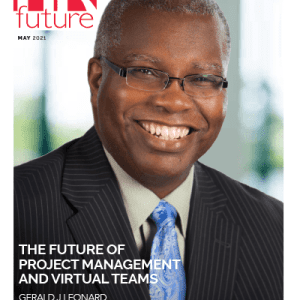The adage that first impressions last should serve as a warning to employers seeking to improve diversity in their companies.
Potential employers too often still evaluate applicants based on their initial impressions, with the result that their unconscious biases continue to influence hiring decisions.
It is time for companies to consider the need for first impressions to literally be the last thing they consider, and to make hiring decisions based on attitude and skills to avoid discarding talent that doesn’t fit preconceived notions.
If we’re going to achieve real workplace diversity, we need to focus on hiring skills that will keep pace with our changing environment and with the thinking required to both maintain ‘business as usual’ and to innovate and disrupt.
There are a number of new and exciting innovations in hiring that can assist in properly uncovering functional competence.
Hiring managers continue to favour the more traditional, unstructured interviews despite multiple studies finding this style of interview to be among the worst predictor of actual and future job performance.
Unfortunately, unstructured interviews allow unconscious or ’implicit’ bias into the hiring process, which perpetuates homogeneity in organisations, because managers continue to appoint people based on feeling rather than fact.
It’s human nature, and very tempting, to ‘hire in your own image’ because the familiar is comforting. We do business with people we like and who are like us. However research has unequivocally proven the benefits of diversity – including improved earnings, enhanced problem solving, increased growth and innovation, and improved quality of work.
It therefore makes sense for organisations to review their approach to shortlisting prospective candidates, and to ensure that the truly talented, qualified and experienced candidates aren’t lost from the get go.
So what measures can organisations take to ensure they don’t lose top talent based on first impressions?
They should consider adding the following approaches to their hiring repertoire:
Blind auditions
A blind audition allows all candidates to be adjudicated first and primarily on their functional competencies, including knowledge, skill and experience.
Using software such as, for instance, GapJumpers, companies get candidates to complete anonymous challenges that demonstrate their skills and test whether they are qualified to perform a job. The software then strips CVs of all identifying information, such as name (which could give clues to ethnicity), graduation year (age), school and address (socio-economic background).
Potential employers then evaluate applicants based on skills only, to avoid discarding talent for the shortlist that doesn’t fit preconceived notions.
It’s important to remember that using software to anonymously screen candidates will get you only half way through the hiring process, and that those who pass should still be considered in terms of fit through other processes.
Collaborative hiring
Collaborative or team-based, hiring involves including members of the team in the interview process.
The benefits include reduction in bias (particularly if the team is diverse), higher levels of employee engagement, more diverse assessment of applicant skills and different approaches to selling the job to potential hires.
Comparative evaluation
Structured interviews – where different interviewers pose the same set of questions in the same order – allow for clearer comparison and evaluation of candidates, and questions can straddle both behavioural and functional competencies.
In a process like this, it’s important that the interviewer scores each answer immediately after it’s provided, and that candidate responses are compared horizontally (in other words, all candidate responses to each of the questions are compared). Comparative evaluations help to calibrate across candidates to reduce bias and decrease reliance on stereotypes.
Considering the language in job advertisements
Software like Textio or Gender Decoder for Job Ads helps employers to avoid bias in job advertising by avoiding coded words relating to gender, race, ethnicity, and so forth.
These products highlight words as ‘negative’, ‘positive’, ‘repetitive’, ‘masculine’ (active, adventurous, challenge) or ‘feminine’ (honest, cooperate, depend) and offer recommendations on how to improve job descriptions so as not to exclude a gender or ethnic group.
Implicit assessment tests
Developed at Harvard, the IAT uncovers thoughts that are being unconsciously hidden by testers and helps to measure attitudes and beliefs.
The purpose of the test is to make employers more aware and to check their biases when interviewing.
Diversity and ultimately, greater business success, can be achieved through a combination of hiring processes that are designed to truly uncover functional and behavioural fit.
If greater diversity is one of the goals, as it should be, a good place to start the journey is by reviewing potentially outdated hiring practices.
Georgina Barrick is the MD of Cassel&Co, Insource ICT and IT Edge – agencies of ADvTECH Resourcing.









